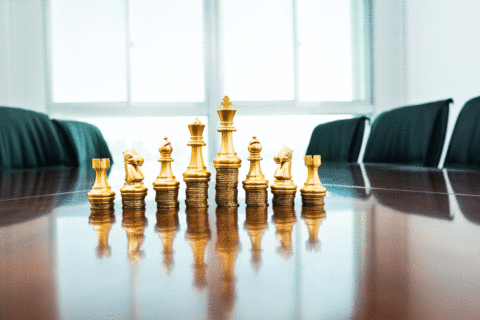To build a long-term competitive advantage, stop obsessing over creating frictionless customer experiences. Instead, delight your customers with meaningful moments.
A new study categorizes customer experiences into two sets:
- Frictionless experiences: Amazon’s one-click ordering, web pages that load in fractions of seconds, or digital banks that let you open an account without visiting a branch
- Meaningful experiences: Hilton DoubleTree’s free chocolate chip cookies for guests, a delightful packaging and unboxing experience, or a fun bank account activation
Most companies today are geared towards creating frictionless experiences. But those aren’t the experiences that’ll give you a competitive advantage.
For a strong and sustainable advantage, aim to provide a similar experience to that of your competitors when it comes to being frictionless. Then, focus on creating unique meaningful experiences for your brand.
Frictionless experiences are the cost of doing business
The same study surveyed 1,070 US consumers to understand what made them choose one brand over another. Frictionless experiences had a stronger impact (model coefficient of 0.74) than meaningful experiences (0.54) in explaining their brand choices. So, is frictionless the way to go? Yes and no.
Some companies are so far ahead of the competition that a frictionless experience becomes a competitive advantage (e.g. Amazon’s fast deliveries).
But advantages like Amazon’s shift customer expectations. Customers become less tolerant of waiting several days for a delivery, a slow web page, or dealing with inefficiencies.
So competitors rush to copy these experiences. And sooner or later – depending on the industry – they catch-up. Each new frictionless experience rapidly becomes the cost of doing business, rather than a sustainable competitive advantage. It’s a race with no winner.
This is fantastic for consumers, but it’s not what will give you a sustainable competitive advantage over your competitors.
Take Revolut, a UK digital bank. It takes 3 days to activate an account with them. HSBC, a traditional bank, takes 36 days. This is rapidly becoming a failing of HSBC, rather than a competitive advantage for Revolut. Barclays, also a traditional bank, has already adapted to these new customer expectations and activates an account in only 2 days.
Barclays could intensely compete with Revolut to get that down to less, perhaps even hours or seconds. But would that give them a long-term competitive advantage? Probably not. Instead, they could look for ways to make their customers feel like royalty when they visit their physical branches (which Revolut doesn’t even have).
Companies are geared towards creating frictionless experiences
Most companies have organized their operations to create better and better frictionless experiences. Product managers optimize for the fewest clicks possible to order a product or upload a video on YouTube. Engineers spend enormous resources to reduce page loading times. Operations managers continuously look for ways to make queues move faster.
Why?
Because it’s easy to measure reductions in friction and the gains that come with them. It’s much harder to justify 3 weeks of development time to create a difficult to measure ‘fun and delightful moment’, as opposed to shaving off 1 second of page loading time that’d reduce web page bounce rates by 15%.
Meaningful experiences require creative thinking. And unless you understand consumer behavior, they can seem like a risky dive into the unknown.
So it’s up to marketers, those with the deepest understanding of customers and human behavior, to create unique meaningful experiences. Take a step back from continuous optimization, and focus on building a competitive advantage that no competitor can copy.
So, how do you create meaningful experiences?
Most of the time, meaningful experiences create a delightful high point in the customer journey. When customers recall their experience, they’ll build their memory around that delightful peak. The end of the experience is usually a good time to place such a peak, but it can be anytime during the customer journey.
For example, you could create a ritual for your product. Before you drink a Guinness, there are precise rules of how you should pour it. When you own a Jeep, you’re expected to wave to other Jeep drivers that drive by. Research shows that people are willing to pay up to 74% more for the same product if it has a ritual attached to it.
Even a small thing like changing the way you speak to customers can create a meaningful experience. For example, recent research shows that using language that repeats what the customer asks for increases their satisfaction and spending (e.g. “I’ll look for that t-shirt in grey” vs “I’ll look for that”).
In both examples, we’re increasing the time that a customer spends interacting with us or our product. An obsession with frictionless experiences would drive us in the opposite direction.
Granted, it’s not easy to find new ways to create meaningful experiences. To start, you can study your customer journey to find opportunities to apply learnings from consumer behavior research. But most of all, be creative and think outside the box.


